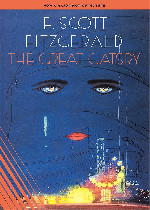
The Great Gatsby(了不起的盖茨比) 立即阅读
The Great Gatsby is a 1925 novel written by American author F. Scott Fitzgerald that follows a cast of characters living in the fictional town of West Egg on prosperous Long Island in the summer of 1922. The story primarily concerns the young and mysterious millionaire Jay Gatsby and his quixotic passion and obsession for the beautiful former debutante Daisy Buchanan. Considered to be Fitzgerald's magnum opus, The Great Gatsby explores themes of decadence, idealism, resistance to change, social upheaval, and excess, creating a portrait of the Jazz Age or the Roaring Twenties that has been described as a cautionary tale regarding the American Dream.
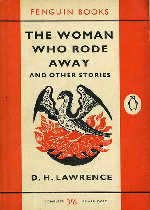
The Woman Who Rode Away and other stories(骑马出走的女人) 立即阅读
"The Woman who Rode Away" is a short story by D. H. Lawrence. It was written in New Mexico during the summer of 1924 and first published in The Dial in two installments in 1925. It later became the title story for a collection of Lawrence's shorter fictional works issued by Martin Secker in 1928. The cave that features at the end of the story was inspired by a visit to a cave on Lucero Peak which overlooks the town of Arroyo Seco, New Mexico.
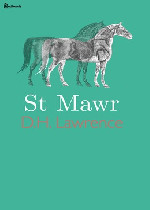
St Mawr is a short novel (or novella) written by D. H. Lawrence. It was first published in 1925. The heroine of the story, Lou Witt, abandons her sterile marriage and a brittle, cynical post-First World War England. Her sense of alienation is associated with her encounter with a high-spirited stallion, the eponymous St Mawr. She eventually settles in a remote ranch set high in the mountains of New Mexico, near Taos.

The Fox is a novella by D. H. Lawrence which first appeared in The Dial in 1922. Set in Berkshire, England, during World War I, The Fox, like many of D. H. Lawrence’s other major works, deals with the psychological relationships of three protagonists in a triangle of love and hatred. Without the help of any male laborers, Nellie March and Jill Banford struggle to maintain a marginal livelihood at the Bailey Farm.
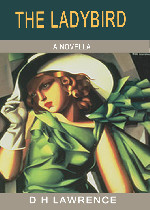
The Ladybird is a long tale or novella by D. H. Lawrence. It was first drafted in 1915 as a short story entitled The Thimble. Lawrence rewrote and extended it under a new title in December 1921 and sent the final version to his English agent on 9 January 1922. It was collected with two other tales, The Captain's Doll and The Fox, and the three novellas were then published in London by Martin Secker in March 1923 under the title The Ladybird and in New York by Thomas Seltzer as The Captain's Doll in April 1923.
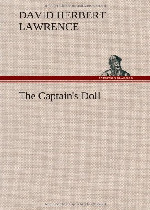
The Captain's Doll(船长的玩偶) 立即阅读
The Captain's Doll is a short story or novella by the English author D. H. Lawrence. It was written in 1921 and first published by Martin Secker in March 1923 in a volume with The Ladybird and The Fox. It was the basis of the 1983 TV film of the same name with Jeremy Irons as the Captain. The story chronicles the journey of fallen German aristocrat Countess Johanna 'Hannele' zu Rassentlow as she dates a Scottish officer of unusual philosophy. The relationship develops into one of D. H. Lawrence's idiosyncratic 'wicked triangles'.
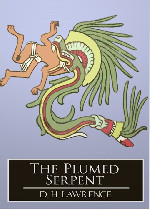
The Plumed Serpent is a 1926 novel by D. H. Lawrence. Set in Mexico during the Mexican Revolution, it was begun when the author was living at what is now the D. H. Lawrence Ranch near Taos in the U.S. state of New Mexico in 1924, accompanied by his wife Frieda and artist Dorothy Brett. Lawrence wanted to call the book "Quetzalcoatl", after the Aztec god of that name, but his publisher Knopf found the name strange and insisted on "The Plumed Serpent", a title Lawrence disliked.

Kangaroo is an account of a visit to New South Wales by an English writer named Richard Lovat Somers and his German wife Harriet in the early 1920s. This appears to be semi-autobiographical, based on a three-month visit to Australia by Lawrence and his wife Frieda, in 1922. The novel includes a chapter ("Nightmare") describing the Somers' experiences in wartime St Ives, Cornwall, vivid descriptions of the Australian landscape, and Richard Somers' sceptical reflections on fringe politics in Sydney.
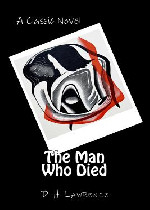
In his last novel, published less than a year before his death, D. H. Lawrence takes up the theme of Christ's resurrection and his final days on earth. Lawrence recounts Christ's agonizing journey from death back to life with alarming realism: his initial painful awakening, the utter disillusionment of living beyond his brutal death, his bewildering encounters with strangers and friends, and finally, his redemptive sexual relationship with the priestess of the pagan goddess Isis.
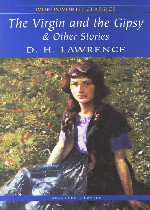
The Virgin and the Gipsy(吉普赛之恋) 立即阅读
The Virgin and the Gipsy is a short novel (or novella) by English author D.H. Lawrence. It was written in 1926 and published posthumously in 1930. Today it is often entitled The Virgin and the Gypsy which can lead to confusion because first and early editions had the spelling "Gipsy". The tale relates the story of two sisters, daughters of an Anglican vicar, who return from finishing school overseas to a drab, lifeless rectory in the East Midlands, not long after the World War I.